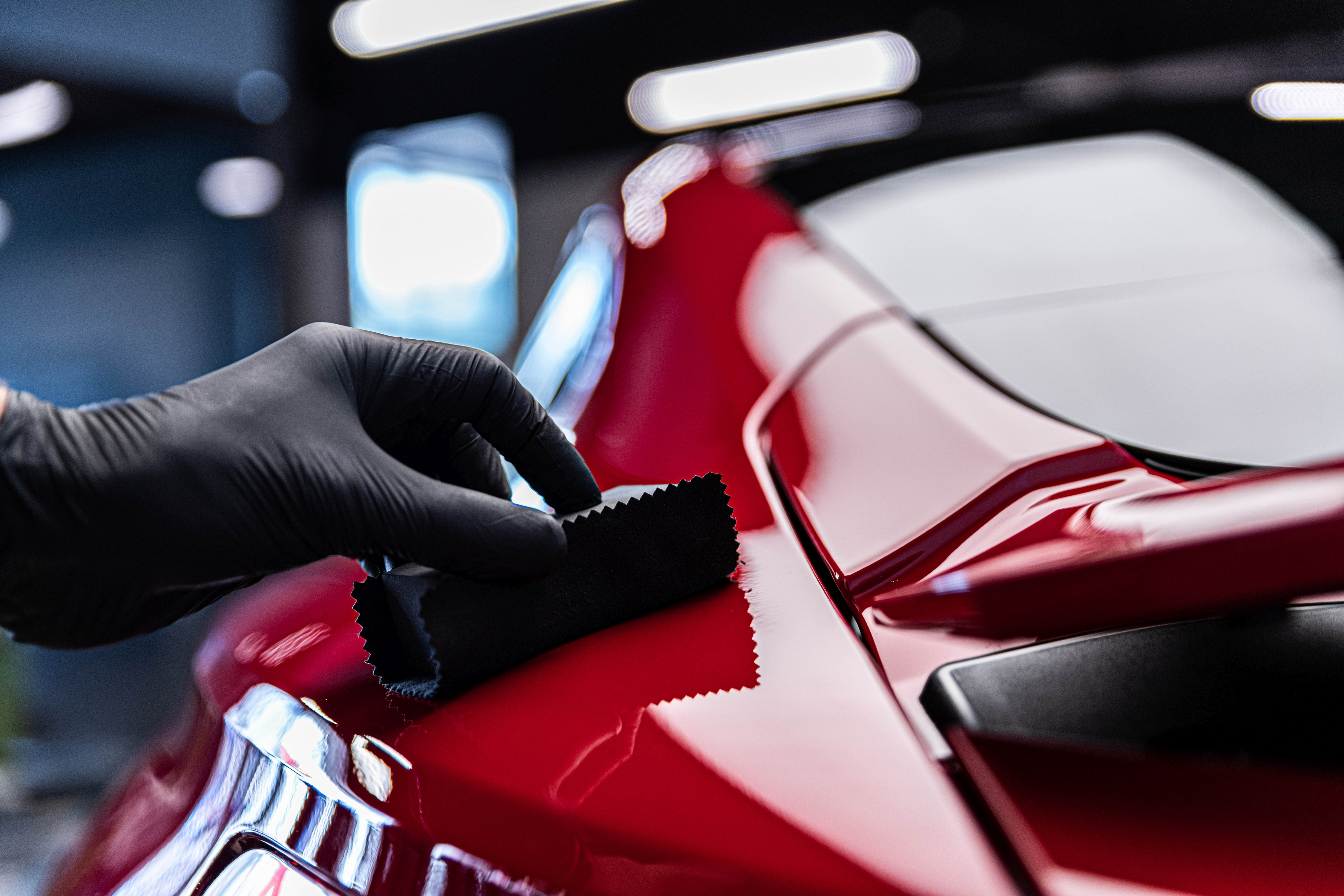Why Ceramic Finishing Is the Ultimate Remedy for a Remarkable Finish
Ceramic covering has arised as a leading solution for those looking for a remarkable coating for their lorries, many thanks to its remarkable longevity and protective attributes. What factors absolutely set ceramic finish apart?
What Is Ceramic Covering?

When applied properly, ceramic layer creates a hydrophobic surface area that drives away water and dirt, making it simpler to preserve and cleanse. Unlike typical waxes or sealers, which generally provide short-lived security, ceramic finishings can last for several years, depending upon the product quality and application technique. The procedure of applying ceramic coating calls for thorough prep work, consisting of thorough cleaning and often repaint correction, to make certain optimum bonding and efficiency.
Ceramic finishes are not limited to automotive surfaces; they can likewise be used on various products, including glass, metal, and plastics, providing a versatile option for improving protection. In general, ceramic covering represents a substantial improvement in surface area security innovation, incorporating both aesthetic and functional advantages for a variety of applications.
Advantages of Ceramic Covering
While lots of surface defense options exist, the advantages of ceramic finish attract attention because of its distinct homes and resilient performance. One of the primary benefits is its remarkable resilience. Ceramic Coating Philadelphia. Unlike typical wax or sealants that require frequent reapplication, ceramic coverings supply a resistant layer that can last for a number of years, significantly reducing maintenance initiatives
One more significant advantage is improved defense against environmental pollutants. Ceramic finishes create a hydrophobic surface that fends off water, dust, and various contaminants, making it easier to clean up. This attribute not just maintains the vehicle's look yet additionally minimizes the threat of deterioration and oxidation, specifically in severe climate problems.
In addition, ceramic coatings provide remarkable resistance to UV rays, protecting against fading and deterioration of paint with time. This UV protection is critical for maintaining the visual worth of surface areas and vehicles exposed to direct sunshine.
In addition, the glossy surface attained with ceramic coating boosts the overall visual appeal, providing surfaces a showroom-quality sparkle. In general, ceramic coverings stand for a significant improvement in surface protection innovation, providing enduring benefits that deal with both practical and visual requirements.
Just How It Functions
Recognizing the science behind ceramic finishings discloses just how they provide such exceptional protection and durability. At its core, a ceramic finish is a liquid polymer that chemically bonds with the car's manufacturing facility paint.
The application process involves numerous actions, including surface preparation, which is crucial to achieving optimum adhesion. Once used, the resource coating goes through a healing procedure, throughout which it hardens and creates a semi-permanent bond with the paint surface area. This bond is what identifies ceramic layers from conventional waxes and sealants, giving a longer-lasting protective barrier that can endure for many years.
In addition, the density of the finishing can enhance its protective top qualities, making sure that it can stand up to severe problems. Eventually, the science of ceramic layers incorporates sophisticated products with cutting-edge application techniques to deliver an unrivaled degree of security link and visual improvement for automobiles.
Contrast With Traditional Methods
When contrasted to traditional paint defense techniques such as sealers and waxes,The advantages of ceramic finishes become particularly noticeable. While waxes use a short-lived sparkle, commonly lasting a couple of weeks to a number of months, ceramic coatings give a lasting protective layer that can sustain for numerous years. This durability significantly lowers the frequency of reapplication, making ceramic finishes a much more affordable solution with time.
Additionally, typical methods typically need substantial preparation and several applications to achieve an acceptable degree of protection. On the other hand, ceramic finishes bond at a molecular degree with the automobile's surface area, creating a robust shield against ecological contaminants like UV rays, acid rain, and road salts. This bond enhances the lorry's resistance to scratches and swirl marks, which prevail with standard waxes and sealers.
In addition, the hydrophobic properties of ceramic finishings repel water and dust, causing easier cleansing and upkeep. On the other hand, wax and sealant-treated surface areas can attract crud, requiring more regular washing - Ceramic Coating Philadelphia. Generally, ceramic layers not only offer premium defense yet additionally supply an extra aesthetically attractive and enduring surface, developing them as the favored option for discerning vehicle owners
Application and Maintenance Tips

Making use of a foam applicator, apply the layer in little areas, adhering to the maker's guidelines regarding thickness and overlap. Allow sufficient treating time in between layers, normally 24 hr, to make certain appropriate bonding. After application, it is critical to prevent direct exposure to water or extreme components for a minimum of a week to enable the covering to totally cure.
Furthermore, using a ceramic maintenance spray can improve the layer's hydrophobic properties and longevity. Normal examinations for any kind of signs of wear will assist maintain the finish's honesty and protect that excellent surface.
Final Thought
In verdict, ceramic finish arises as a premium option for achieving a flawless automotive surface. Its outstanding toughness, safety top qualities, and hydrophobic buildings substantially improve the vehicle's look while streamlining upkeep efforts. By creating a durable bond with factory paint, ceramic finishing successfully guards against scratches, UV rays, and environmental pollutants. With a lifespan extending several years, this advanced option not just protects yet also elevates the general aesthetic appeal of vehicles, making it an affordable financial investment for car enthusiasts.
